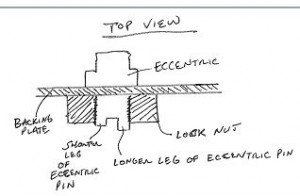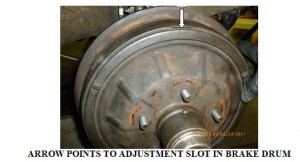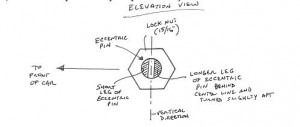by Art Gardner
I have had ten 1949-56 Cadillac’s over the last 25 years. Some I kept bone stock, one I highly modified, and to several I made minor “tweaks” to improve performance/reliability/safety/convenience. From my experience, I encourage you to consider keeping your ’49 or any other old Cadillac completely stock or very stock — for financial, aesthetic, and enjoyment reasons. Don’t do something you will regret later, as there are many hidden dangers and pitfalls in modifying old Cadillac’s.
To me, the biggest drawback is that most people are not as skilled at car design as the original designers (no surprise there) and the car is likely to end up looking and performing much worse than the original. Secondly, it is often a financial disaster to make big changes to a ’49 or other old Cadillac. Many people start down a path of “customizing” a classic car by chopping the top, frenching the headlights, shaving the door handles and other exterior chrome, adding louvers, replacing the engine with a generic Chevy 350, etc. Most of the time this ends up ruining the car permanently. Do you really think you can make a classic Cadillac more beautiful than did the original designers? Perhaps, but most such modifications rob the car of its intrinsic appeal and make it uglier, not prettier. Sometimes the car does end up looking good. But often not.
I strongly recommend retaining the original drive train, as the 331 Cadillac engine is very, very good – in fact it was at the top of the heap for decades and is just as mechanically reliable as any small block Chevy. Same thing for the our HydraMatic transmission. It is just about bullet-proof. If yours doesn’t work like it should or if it leaks, get it professionally rebuilt and enjoy years of trouble-free automatic shifting.
Without going into all of the gory details, here are my bottom-line recommendations, learned the hard way, for what works well on a 1949 Cadillac:
1. If it came with 6 volts, keep it 6 volts if possible. Pay attention to grounds and the proper cables. Six volts works!
2. If you must improve the electrics, use a 6 volt alternator (keeping the voltage regulator in place for looks).
3. On a ’49, just a “sample” of the current goes through the ammeter, so keep the ammeter as is.
4. Use a better battery (I like the 6v Optima a lot).
5. Add air conditioning if you have to in order to use the car (in which case you would have to convert the car to 12 volts). Otherwise, don’t.
6. Use stainless steel brake lines (to resist internal corrosion) and dual circuit master cylinders for redundant safety. If sticking with a single circuit master, have it sleeved with brass or stainless steel to stop internal corrosion. If you can afford it, have the wheel cylinders sleeved with brass or stainless steel also. Use a remote brake reservoir (you can use parts from a ’54 and later Cadillac) to allow you to check the fluid regularly.
7. Convert your non-functioning clock to a quartz movement.
8. Use an electronic ignition module (e.g., Pertronix) or a dual point distributor plate for better ignition.
9. Keep the exhaust stock, but increase the pipe size slightly to a 2¼ inches diameter for better breathing.
10. Keep the fuel system stock. If vapor lock or engine overheating is a problem, use an electric fuel pump for “go” and keep the mechanical pump just for “show” (remove the rod and route the fuel through the non-working mechanical pump).
11. Avoid adding power steering; but if you must, use a later Cadillac system. Avoid rack and pinion.
12. Use radial tires. If your car doesn’t have power steering, look for radials with a very narrow contact patch (e.g., the Diamondback 700R15) and run the recommended higher inflation air pressure.
13. Keep your stock radio, but have it rebuilt. Rebuilders can add an MP3 input to the radio to play FM and digital music files.
14. Add seat belts, which can be easily done. On 4-door sedans and Series 75 limos, you should add shoulder belts.
15. Install a thicker stabilizer bar up front (like the’49 limos and hearses have) – you will be glad you did and no one will know.
16. Stick with the vacuum wipers if you can. If not, enjoy your electric wipers!
If you follow this advice, you will love using your car and will find that you drive it more and more. Above all, my cardinal rule is that if you feel compelled to change something, please change it in a way that can be undone easily (keep the original parts if you can and make the change a bolt-on operation). In other words, make the change a reversible one! Also, if possible, try to make the change look like it came that way from the factory. For example, if you are replacing the generator with an alternator, don’t use a chrome-plated alternator that will look terribly out of place in a 1949 Cadillac engine bay. Instead, get one that is black or paint it black to fit in with the rest of the engine bay.
In the end, it is your car, not mine, so do what makes you happy. But if you do want to tweak your car some, you will be miles ahead if you learn from my mistakes and triumphs. If you have specific questions about any of this, feel free to contact me


